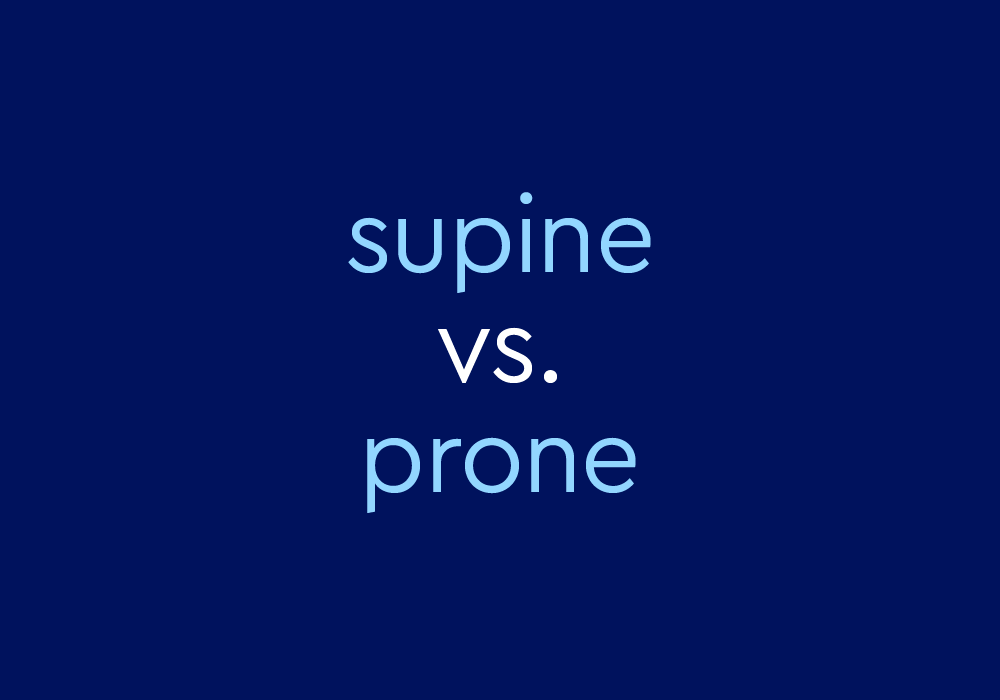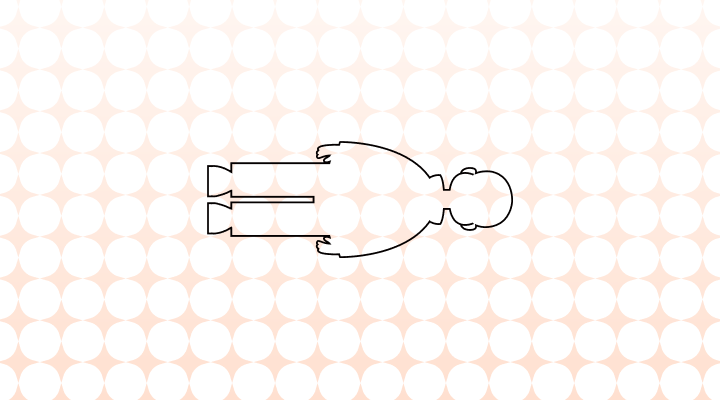Supine refers to lying face-up on one's back, while prone means lying face-down on one's stomach.
Understanding the difference between supine and prone is important as they are medical terms used to describe specific body positions, each serving a distinct purpose in healthcare and patient care.
What does supine mean?
Supine refers to a position in which a person lies flat on their back with their face upward. In this posture, the front of the body, including the chest and abdomen, is facing upward, while the back of the body is in contact with the supporting surface.
When is it used?
The supine position is commonly used during medical examinations, surgical procedures, or when a patient needs to rest comfortably. It allows healthcare providers easy access to the front of the body for various medical assessments and treatments.
Example sentences
- After a long day at work, she lay supine on her comfortable bed to relax.
- Yoga enthusiasts often practice the supine position to stretch their backs.
- The doctor asked the patient to stay supine during the examination.
- Babies are typically placed in a supine position for sleeping to reduce the risk of sudden infant death syndrome (SIDS).
- In the supine posture, his arms and legs were fully extended.
- The supine sunbather enjoyed basking in the warm rays of the sun.
- During the massage, the therapist asked the client to lie supine on the massage table.
- The supine position is recommended for some breathing exercises in meditation.
- While stargazing, we lay supine on the grass, looking up at the night sky.
- The supine posture is often used in physical therapy to assess muscle strength and flexibility.
What does prone mean?
Prone describes a position where a person lies flat on their stomach with their face downward. In this posture, the front of the body is in contact with the supporting surface, and the back of the body faces upward.
When is it used?
The prone position is used in specific medical situations, such as when a patient needs to improve lung function, as it can facilitate better expansion of the posterior lung segments.
Example sentences
- He felt more comfortable sleeping in a prone position with his face buried in the pillow.
- The photographer captured a stunning image of the model lying prone on the beach.
- Soldiers were trained to go prone to make themselves less visible on the battlefield.
- The yoga instructor guided the class into the prone position for a series of relaxation exercises.
- The swimmer was in a prone position, waiting for the starting signal to dive into the pool.
- The detective examined the prone body of the victim at the crime scene.
- During the CPR training, participants practiced chest compressions on a mannequin placed in a prone position.
- The hiker lay prone on the ground, trying to get a closer look at the tiny wildflowers.
- The sniper took aim from a prone position to maintain accuracy and stability.
- The athlete stretched her muscles in a prone position before the race to improve her performance.
Common idioms/phrases
- Lie supine: While not an idiom, this phrase is used in medical or anatomical discussions to describe the act of lying flat on one's back.
- Take a supine stance: This expression can be used metaphorically to describe someone who is passive, inactive, or not taking a proactive role in a situation. It suggests that the person is figuratively lying down and not actively engaged.
- Supine submission: This phrase is sometimes used to describe a state of complete surrender or submission, where a person is figuratively lying flat and yielding to someone else's authority or control.
- Prone to (something): This is a straightforward phrase used to indicate a tendency or susceptibility to a specific behavior or condition. For example, "She's prone to allergies during the spring."
- Prone position: While not an idiom, this phrase is used in medical and anatomical contexts to describe a position where a person is lying face down.
- Lying prone: This expression refers to being in a position where one is lying flat on their stomach or face down.
- Prone to accidents: This phrase is used to describe someone who frequently gets into accidents or has a propensity for being accident-prone.
- Prone to exaggeration: This idiom is used to describe someone who tends to embellish or overstate things, often making stories or situations seem more dramatic or extreme than they are.
- Prone to anger: This expression is used to describe someone who easily becomes angry or is quick to lose their temper.
- Prone to error: This phrase describes a situation or individual that is more likely to make mistakes or errors in judgment.
- Prone to procrastination: This idiom is used to describe someone who frequently delays tasks or avoids doing work until the last minute.
- Prone to daydreaming: This expression refers to someone who often engages in spontaneous, vivid daydreams or fantasies.
- Prone to change: This phrase describes a situation or individual that is likely to change or be unstable.
Both positions have their applications in healthcare, and the choice between supine and prone positioning depends on the medical context and the goals of patient care. Understanding these terms helps healthcare professionals communicate effectively when discussing patient positioning and treatment plans.
Discover more about the AI English proofreader, Engram!

Reference














